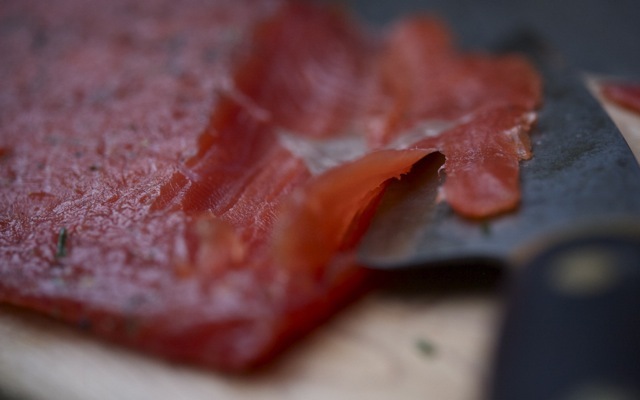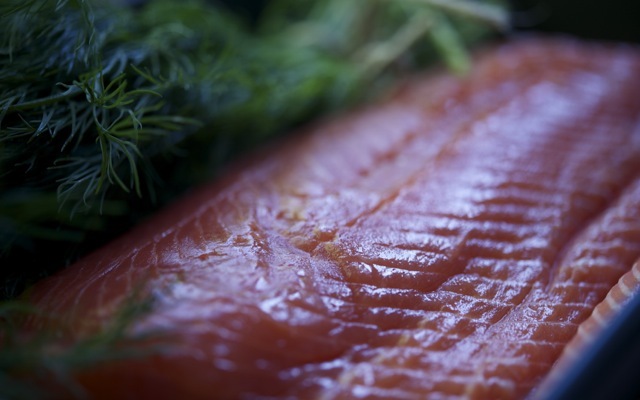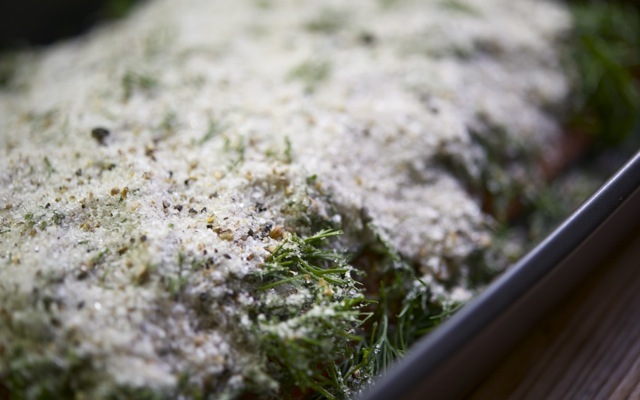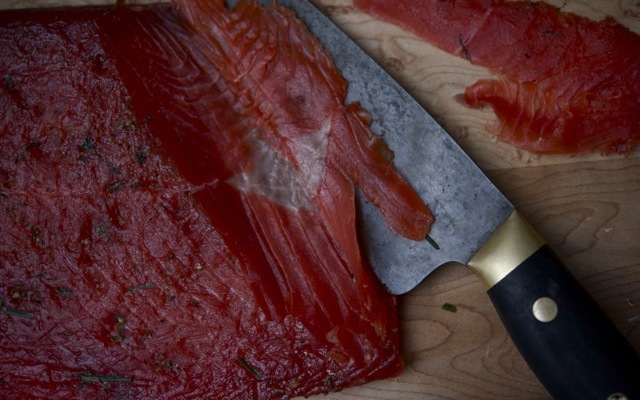10.8.12 Cure All

If I lived near the sea, I'd be tempted to cure salmon the way Scandinavian fishermen did in the Middle Ages, by salting it lightly and burying it in the sand above the high-tide line until it was pleasantly fermented. Thus gravlax—from grav, which means "grave," and lax, which means "salmon." The fermented kind is undoubtedly staging its comeback (along with kombucha and kimchi and every other funky thing), but if you're lacking a piece of beachfront property, you can always bury your salmon in a dry marinade of salt, sugar, spices and fresh dill for a few days. The salmon cures by osmosis, and the moisture turns the dry cure into a highly concentrated brine. This method works for most fatty fish, but salmon is the traditional favorite. It has a mild, sweet flavor and a velvety, unctuous mouthfeel that goes nicely with icy cold vodka and heated conversation.




Salmon Gravlax with Dill
- — 1.5 lbs center-cut fresh wild salmon fillet, free of bones
- — 1 teaspoon whole coriander seeds
- — 1 teaspoon fennel seeds
- — 1 generous teaspoon black peppercorns
- — 1/2 cup organic cane sugar
- — 1/3 cup coarse sea salt
- — 3 teaspoons dill pollen
- — 1 tightly-packed cup coarsely chopped fresh dill
Two to three days before serving, cure the salmon. In a small skillet, toast the coriander and fennel seeds over medium heat until aromatic, shaking pan frequently. Transfer to mortar or spice grinder. Add peppercorns and crush coarsely. Mix with the sugar, salt and dill pollen.
In a shallow glass or china dish just large enough to hold the fish, spread half of the fresh dill, then half the salt mixture. Set the fillet, skin side down, on the mixture. Press the rest of the dill into the fish and then pack the remaining salt mixture over the surface. Wrap with a double layer of plastic wrap. Place a pot or cake pan atop the salmon and weight it with heavy cans. Refrigerate 2 to 3 days, turning every 12 hours and basting with the cure.
To serve, scrape the dill and spices from both sides of the fish. Pat it dry. Keep the salmon cold. Place it on a cutting board skin side down and slice very thinly, on a slant, across the grain, freeing each slice from the skin. Fan the slices out on a platter and keep cool.
Serve gravlax with sprigs of dill, wedges of lemon, cucumber rounds and capers. Pumpernickel or thin crackers go nicely, as do mustard sauce, horseradish or crème fraîche.
 Download Recipe
Download Recipe






4 Comments